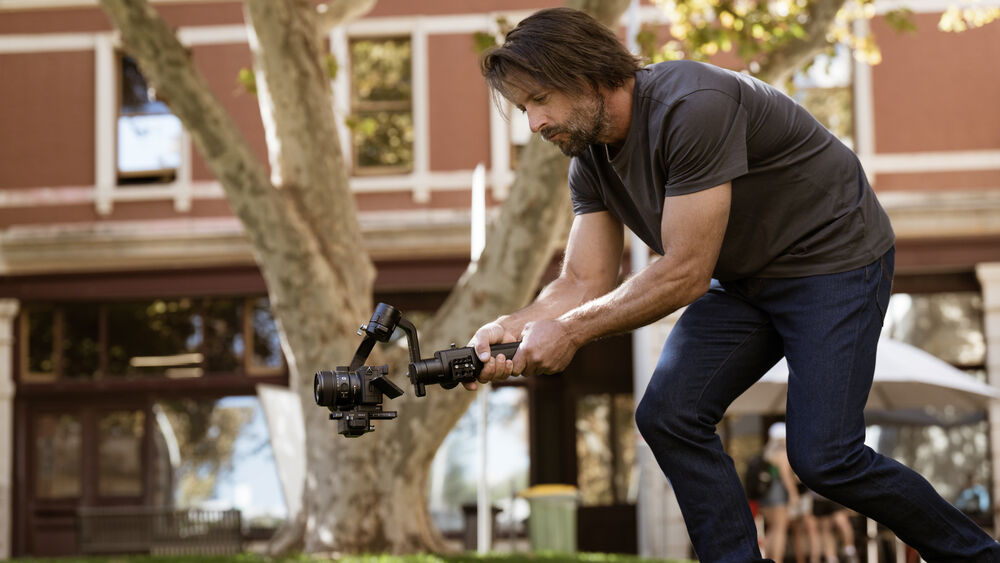Sony a6700 Mirrorless Camera
Key Features
- 26MP Exmor R APS-C BSI CMOS Sensor
- BIONZ XR Image Processor
- UHD 4K 120p / FHD 240p / 10-Bit 4:2:2
- Up to 11-fps Shooting, ISO 100-32000
- 5-Axis Pixel-Level Image Stabilization
- Real-Time Tracking AF for Stills & Video
- 759-Point Phase Detection, 93% Coverage
- S-Log3, S-Gamut3, S-Cinetone, User LUTs
- Internal Mic + Inputs, USB Streaming
- 3″ 1.03m-Dot Vari-Angle LCD Touchscreen

The Multi-Tool for the Multi-Hyphenate
A compact synthesis of Sony‘s Cinema Line innovations, α-series still-image rendering quality, and advancements in AI-based recognition technology, the a6700 Mirrorless Camera puts powerful and versatile imaging capabilities into the hands of ambitious content creators. Powered-up by its combo of the latest 26.0MP back-illuminated Exmor R CMOS sensor and the BIONZ XR processor, the camera nevertheless weighs less than its predecessor, resulting in a mobile workhorse capable of an unstrained 11 fps continuous stills capture or stress-free UHD 4K video oversampled from a 6K resolution, making it a formidable multi-tool for the multi-hyphenate creative.
26.0MP Exmor R CMOS Sensor and BIONZ XR Processor
The Sony a6700’s advanced imaging system is powered by the 26MP APS-C Exmor R CMOS sensor and BIONZ XR processor, a combination introduced in the FX30 Digital Cinema Camera that is capable of 10-bit UHD 4K imagery at up to 120 fps or a top continuous shooting rate of 11 fps with AF and AE and up to 59 compressed raw still images in bursts. The introduction of the back-illuminated structure to the camera’s sensor gives it a higher resolution without sacrificing sensitivity. With an ISO range of 100-32000 that’s expandable to ISO50-102400 when shooting stills, the camera boasts low-light performance with minimal noise and more than 14 stops of dynamic range.
Cinematic Video in UHD 4K
Along with its powerful sensor and processor, the Sony a6700 brings a strong suite of professional video features from its Cinema Line series to everyday content creators and aspiring filmmakers.
- Full pixel readout from the 6K sensor creates high-quality UHD 4K video, with approximately 2.4x the data required for 4K video, minimizing moiré and aliasing.
- UHD 4K recording is possible with frame rates up to 120p and full HD recording up to 240p, using full 1:1 pixel readout without binning.
- Record in 10-bit 4:2:2 using advanced XAVC HS and XAVC S-I formats for consistent performance and quality at bitrates up to 600 Mb/s.
- Record for more than two hours in 4K 30p, or more than 40 minutes at 4K 60p on a 128GB card.

- Slow & Quick (S&Q) mode allows shooters to capture 4K video at specified steps between 1-120 fps and Full HD between 1-240 fps, depending on the format. These settings will allow you to slow down action as well as speed up a slow-moving scene.
- S-Cinetone can be used to deliver distinct colors and healthy-looking skin tone rendering that is based on technology from the professional Cinema Line cameras, such as the VENICE. This color profile offers natural mid-tones, soft colors, and especially well-controlled highlights.
- The S-Log3 and S-Gamut3.Cine Gamma Curves allow for more than 14 stops of dynamic range and for increased post-production flexibility, including matching video from other Sony Cinema Line cameras.
- Creative Looks can be baked into the recorded footage to create a specific mood during recording and minimize the need for editing.
- User-created LUTs and presets can be set for accurately monitoring footage or previewing a specific look during shooting and can be applied to the camera’s monitor, EVF, or HDMI output.
- The camera supports instant time-lapse settings with framerate, recording, light, and interval customization.
AI-Powered Autofocus and Image Stabilization
The Sony a6700’s AI Processing Unit brings a host of enhanced capabilities to the camera’s autofocus and image stabilization systems, ensuring smooth handling and clarity no matter the shooting conditions. The camera’s 759 phase detection points in stills mode and 495 points in video mode, covering 93% of the image area, are enhanced with AI-powered subject recognition performance and real-time tracking. Other autofocus features include focus bracketing in up to 299 images with sequentially-shifted focus points, focus accuracy in low light down to EV -3.0, focus breathing compensation, autofocus assist, focus mapping, and focus peaking during autofocus.

Image Stabilization
The camera’s pixel-level 5-axis optical image stabilization system, which compensates for five different types of camera shake encountered during handheld shooting of stills and video, is algorithmically optimized for precision detection and control down to a single pixel. The AI Processing Unit also improves communication between the body and the lens, providing more stable framing before shooting. This allows users to confidently use any lens, even adapted lenses, for critical imaging without encountering blur from camera shake.
Advanced Rendering

For stills-shooters, the a6700 offers a wide range of color renderings and compressions for optimal image quality and storage management, led by the introduction of the High Efficiency Image File (HEIF) format, available here in 4:2:0 and 4:2:2 options. Users also have the choice between Compressed and Lossless Compressed options when shooting raw. The AI Processing Unit also helps to achieve better exposure results in Auto mode, achieving a 20% increase in reliability over the a6600 according to manufacturer testing, with applicable algorithmic adjustments made for skin tone, backlit situations, and white balance. The same Creative Looks presets available in video are also available when shooting stills, allowing additionally for user-defined configurations with eight adjustable parameters. For optimal viewing of stills when tethered to select monitors and televisions, the a6700 now offers a stills-designed Hybrid Log-Gamma mode that delivers accurate dynamic range in 10-bit HEIF format.
